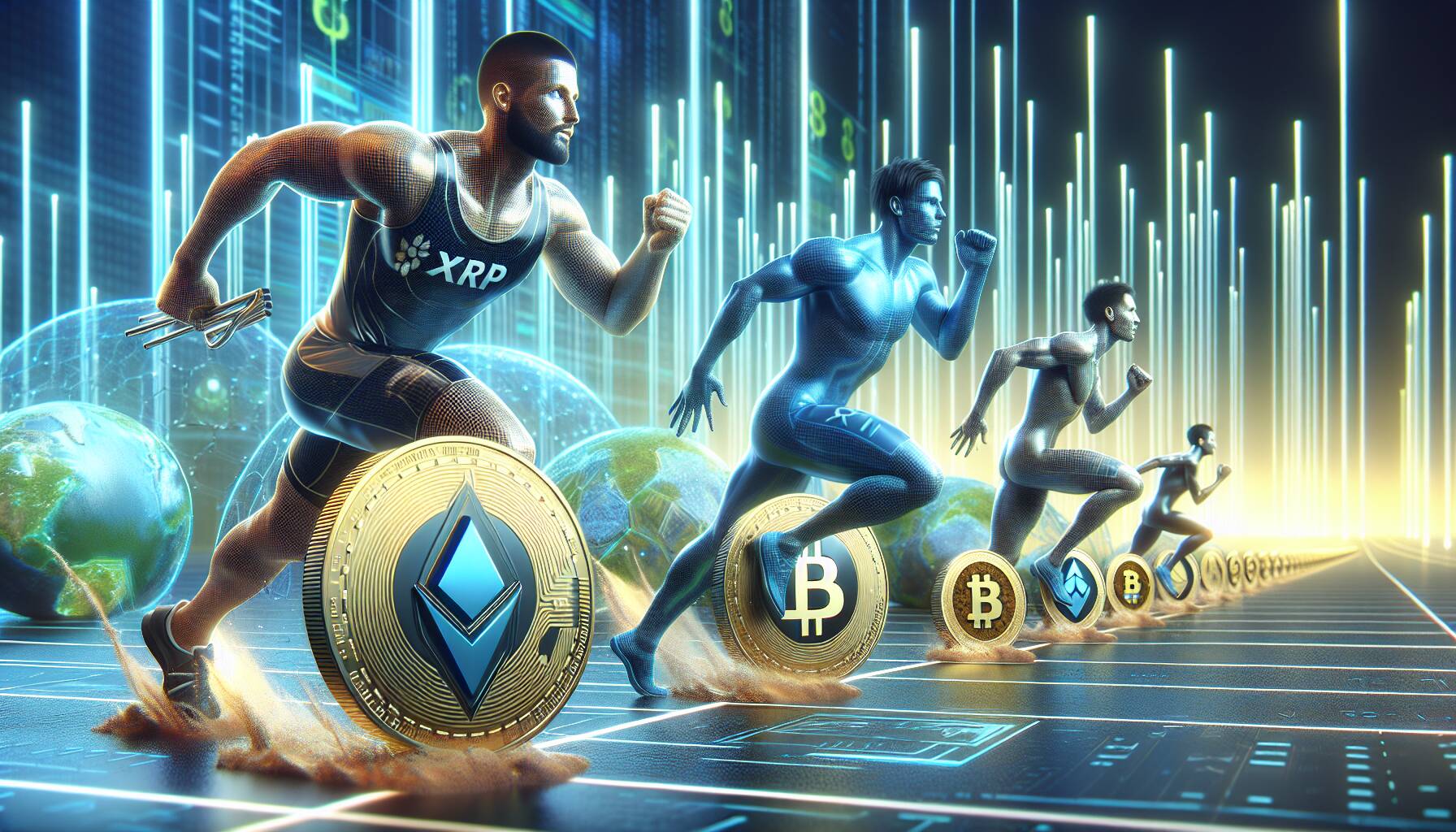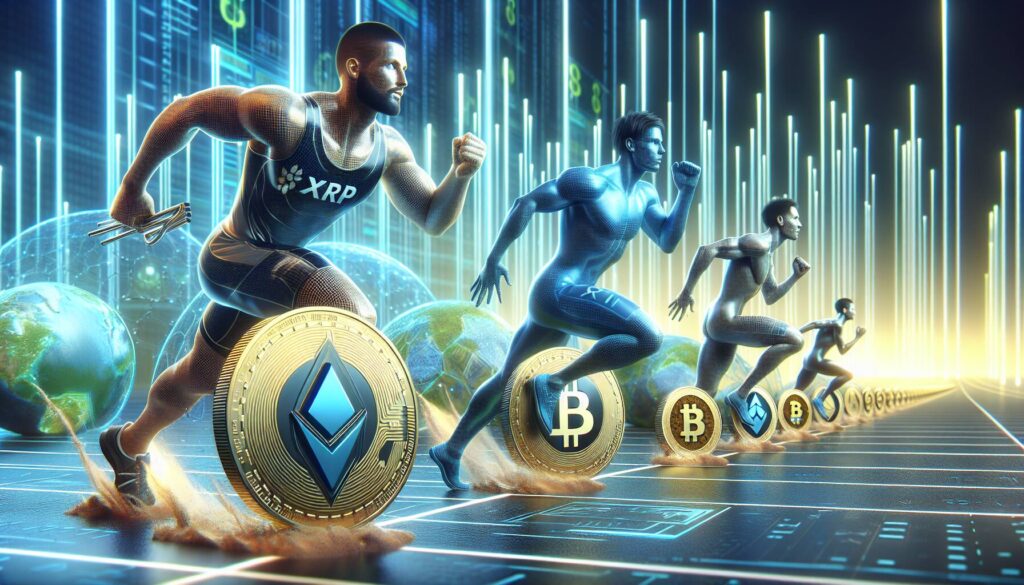In a rapidly evolving cryptocurrency landscape, XRP and Solana (SOL) are emerging as leading contenders for a spot exchange-traded fund (ETF) approval in the United States. A recent report from Kaiko analysts highlights their strong liquidity, particularly XRP, which has gained significant momentum since late 2024. This article delves into why these two digital assets are catching the eye of investors and analysts alike.
According to data from Kaiko Indices, both XRP and SOL showcase impressive depth in the market, particularly at vetted exchanges. Notably, XRP has surged past SOL in terms of market liquidity, even doubling that of Cardano (ADA). This strong performance stands in contrast to bitcoin’s recent spot ETF approval following a landmark legal victory for Grayscale, which underscored the SEC’s inconsistent approach between futures and spot markets.
“This underlying market’s improving dynamics and the launch of a 2x XRP ETF last week position XRP ahead of other assets when it comes to approval,” Kaiko analysts noted, pointing to the recent introduction of a 2x XRP ETF by Teucrium that has already achieved over $5 million in volumes on its debut.
Interestingly, while XRP’s position is bolstered by its rising U.S. market share, having reached its highest levels since a 2021 lawsuit by the SEC led to numerous delistings, Solana’s share has slightly declined. From a peak of up to 30% in 2022, SOL now stands at 16%. This variance indicates shifting investor sentiment and market dynamics that could influence future ETF applications.
It’s crucial to acknowledge, however, that room for caution persists. Deribit’s options market indicates some bearish sentiment in XRP, as traders appear to seek protection against potential downside. As the SEC reviews multiple XRP spot ETF applications, including those from Grayscale, future developments could significantly impact the broader crypto landscape.
Stay tuned as we continue to track these developments and the implications for investors navigating the thrilling world of cryptocurrency.

XRP and Solana: Potential Spot ETF Candidates
The following key points summarize the current landscape surrounding XRP and Solana as top candidates for spot ETF approval in the U.S., highlighting their liquidity dynamics and market behaviors.
- High Liquidity
- XRP and Solana (SOL) show significant liquidity, crucial for ETF approval.
- XRP has surpassed SOL in liquidity since late 2024, breaking previous barriers with double the liquidity of Cardano (ADA).
- Market Depth
- Both tokens have impressive depth in the top 1% on vetted exchanges, essential indicators for stable trading paths.
- Impact of SEC Lawsuit
- The SEC’s 2021 lawsuit against XRP led to delistings, but XRP’s U.S. market share has rebounded to its highest since then.
- In contrast, Solana’s U.S. market share has decreased from 25-30% in 2022 to around 16%.
- New ETF Launches
- Teucrium recently launched a 2x XRP ETF, generating over $5 million in volume on its first day, highlighting robust investor interest.
- This launch positions XRP favorably for potential spot ETF approval based on market dynamics.
- Comparative Landscape
- Unlike Bitcoin, which secured spot ETF approval partly through Grayscale’s legal victories, XRP’s market operates differently with minimal futures activity.
- The sentiment around XRP reflects a growing interest despite overall market caution, as indicated by bearish trends in Deribit’s options market.
- Future Implications
- A successful ETF approval for XRP could redefine individual investment opportunities and market accessibility.
- Investors should remain aware of how changes in cryptocurrency regulations may impact their portfolio diversification and risk management strategies.
Comparative Analysis of XRP and Solana’s Potential for Spot ETF Approval
The recent insights provided by Kaiko analysts underline the competitive landscape for cryptocurrencies vying for spot ETF approval in the U.S., particularly highlighting XRP and Solana (SOL).
Competitive Advantages of XRP: XRP is not just making waves due to its robust liquidity, as indicated by its exceptional market depth on vetted exchanges. It has gained momentum thanks to the launch of a 2x XRP ETF by Teucrium, which has already demonstrated impressive trading volumes post-launch. This positioning could place XRP ahead of other cryptocurrencies, as it stands to benefit from both regulatory acknowledgment and market interest. Additionally, XRP’s U.S. spot market share is rebounding, suggesting that traders are becoming more confident in its commercial viability and regulatory stance following the SEC’s previous legal entanglements.
On the other hand, Solana’s Disadvantages: While SOL initially enjoyed a strong market position, its share in the U.S. market has recently declined significantly, raising concerns about its potential for spot ETF approval. Solana’s diminishing market presence makes it less appealing to investors compared to XRP. The perception of higher risk and lower liquidity could deter institutional investors, who are looking for assets with more stable and deep market structures.
Moreover, XRP’s lack of a robust futures market could be perceived as a double-edged sword; while its trading volume is predominantly offshore, this absence might limit its attractiveness to certain investors who prefer assets with diverse trading options. In contrast, Solana faces the challenge of market perceptions, particularly as it experiences volatility and competition from other emerging tokens.
Implications for Investors: The competitive advantages currently held by XRP make it a more favorable option for institutional and risk-averse investors looking to tap into the growing cryptocurrency ETF market. Its improved market dynamics could invite larger investments, thereby enhancing its liquidity and appeal further. Conversely, Solana might struggle to attract the same level of interest unless it can regain lost ground in liquidity and market share. This situation presents a dilemma for investors, as the rapid pace of market changes means that those holding SOL may need to reconsider their positions if its declining market share continues.
Lastly, while both cryptocurrencies show promise for future ETF approvals, the presence of caution reflected in the options market suggests that investors should maintain a diverse portfolio and remain particularly vigilant as regulatory outcomes unfold, especially with key deadlines approaching for XRP’s ETF applications.

















